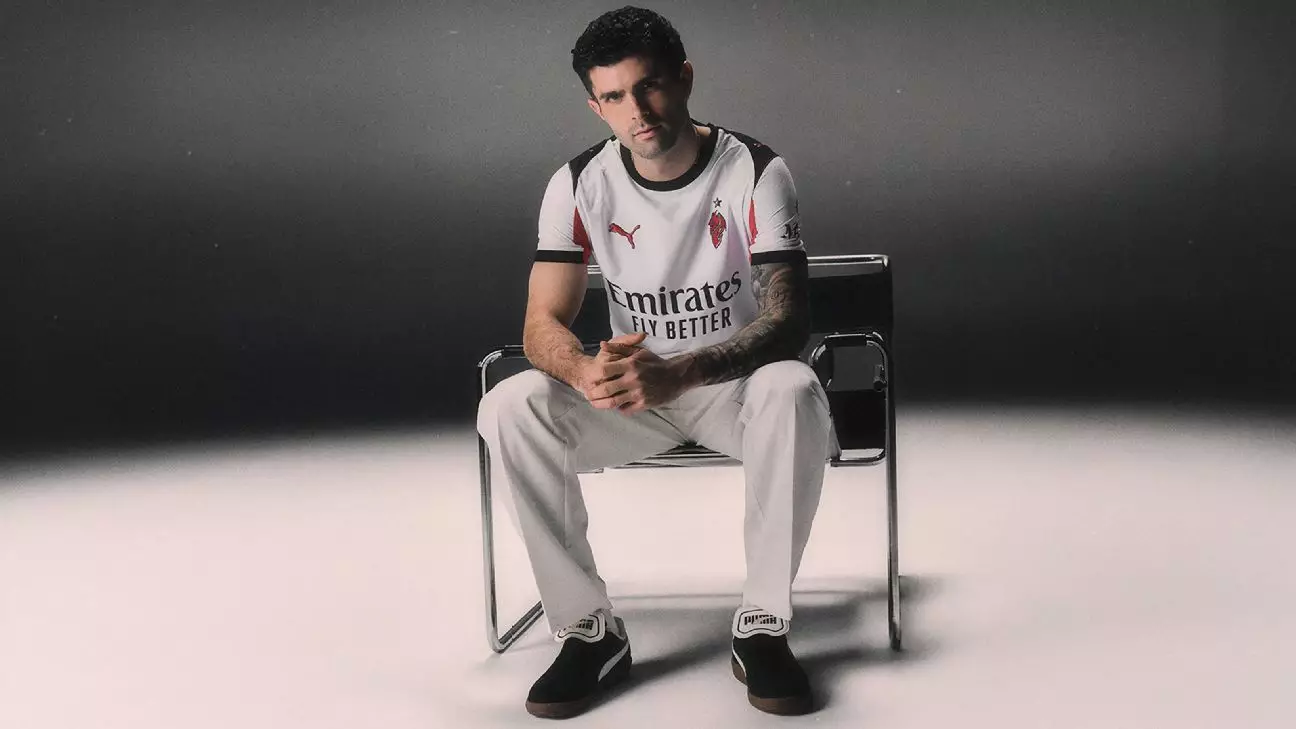AC Milan’s latest away kit is more than just a piece of sportswear; it’s a testament to the club’s storied history spanning over a century. Central to this design is the emblematic “Diavoletto,” the mischievous little devil mascot that has symbolized Milan’s spirit since inception. Its recurring appearance on the club’s uniforms underscores an identity rooted in resilience and fiery passion. The decision to incorporate this mascot into the kit signals a deliberate effort by Milan to connect fans with a rich tradition, transcending fleeting fashion trends. Rather than merely updating their look, the Rossoneri are capturing a nostalgic essence that resonates deeply with long-time supporters and reinforces their legendary status.
Design Philosophy: Simplicity Meets Subtle Nostalgia
In an era dominated by intricately patterned jerseys, Milan opts for a cleaner, more understated aesthetic with this release. The classic white base remains, serving as a blank canvas that accentuates the minimal yet meaningful details. Horizontal bold blocks of red and black interrupt the purity of the shirt, subtly referencing the club’s iconic colors without overwhelming the design. Notably, the return of the vintage-styled crest—absent from recent kits—serves as a visual bridge linking past triumphs to present ambitions. While some might interpret this simplicity as a missed opportunity for innovation, it undeniably emphasizes the club’s roots, reminding fans that true legacy isn’t built on excess but on authenticity and tradition.
Controversy and Criticism: A Step Back or Forward?
Despite the sentimental value, the kit has not escaped scrutiny. Critics argue that the design, reminiscent of early 2000s training tops, feels like a step down from the sleek, crafted elegance of last season’s polo-collared away jersey. Some perceive the minimalistic approach as a rushed or uninspired homage, lacking the boldness expected from one of Europe’s elite clubs. Furthermore, the historical callback to the 1980s—particularly the period following the infamous Totonero scandal—may evoke uncomfortable memories for some fans, raising questions about whether Milan is overly nostalgic or simply embracing its complex history. In an age where clubs are rapidly innovating their visual identities, Milan’s conservative approach might risk alienating supporters craving fresh, dynamic designs.
The Influence of Modern Trends and Brand Identity
The presence of USMNT star Christian Pulisic modeling the kit suggests a strategic move toward global appeal and modern marketing techniques. Yet, this choice paradoxically highlights a tension between Milan’s historical authenticity and the commercial drive to appeal to younger audiences. The jersey’s seemingly modest design choices evoke a sense of humility and reverence, but they also risk being perceived as outdated or uninspired. Whether Milan’s approach signals a new direction emphasizing tradition or a missed opportunity for bold innovation remains to be seen. The kit’s design embodies the ongoing balancing act many historic clubs face: staying true to their heritage while adapting to a rapidly evolving football landscape.
In the end, Milan’s new away kit is more than clothing; it’s a visual narrative. It celebrates tradition, confronts modern aesthetic standards, and invites fans to reflect on a club’s complex past while gazing toward its future. Whether it’s a stroke of genius or a misstep, it undeniably sparks conversation—exactly what a legendary team like AC Milan needs in this ever-changing football world.

